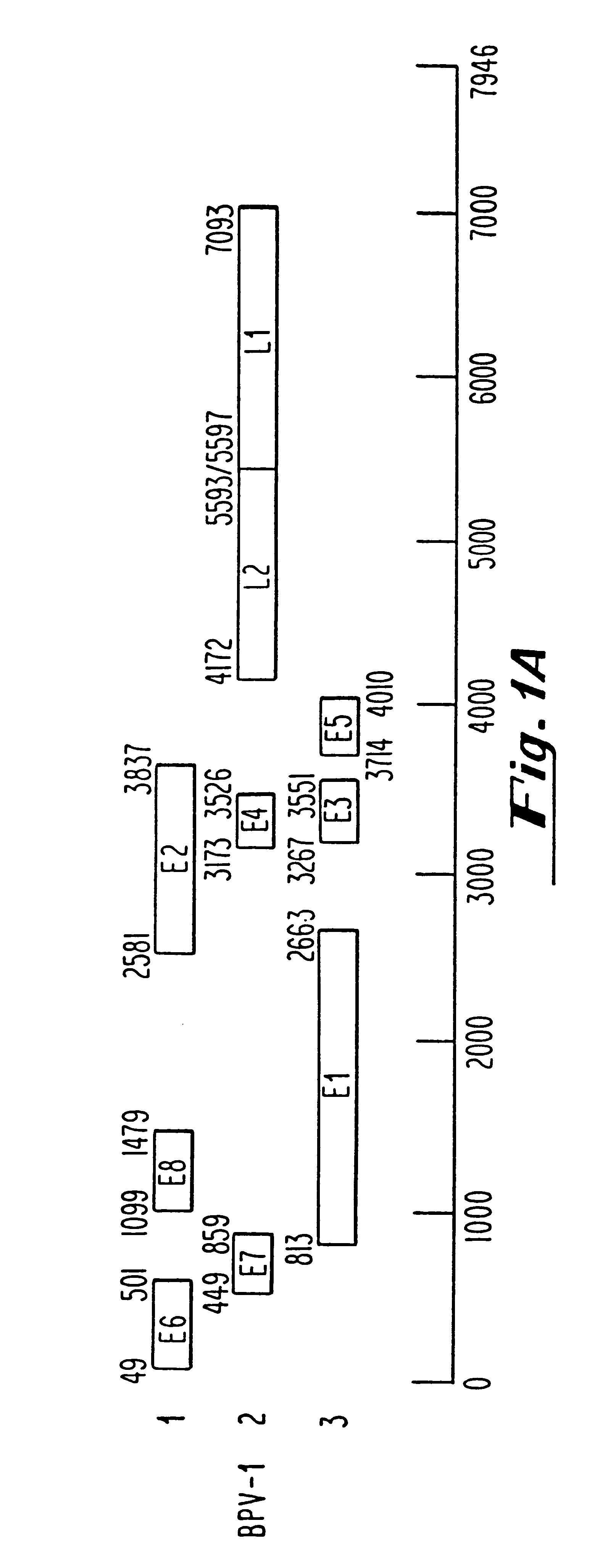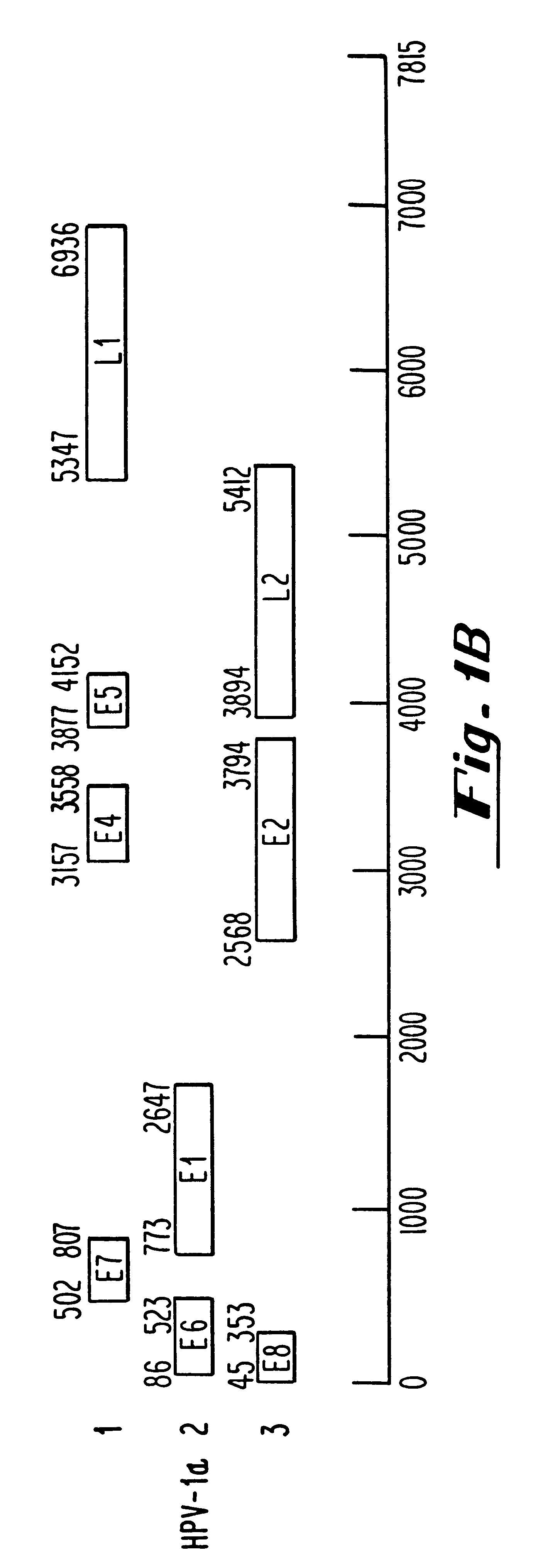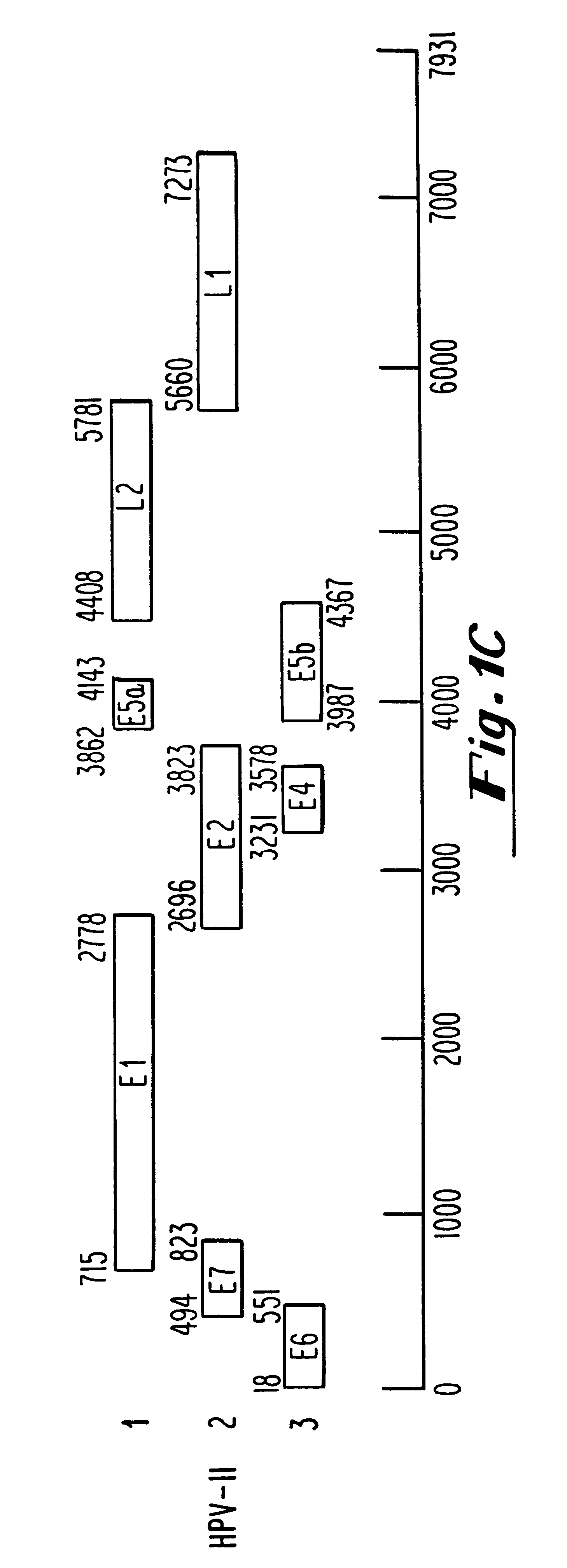Antisense oligonucleotide inhibition of papillomavirus
a technology of papillomavirus and antisense oligonucleotide, which is applied in the direction of carbohydrate active ingredients, biochemistry apparatus and processes, organic chemistry, etc., can solve the problems of insufficient current treatment of genital warts, high risk of cervical cancer for women containing specific hpv types, and high risk of genital warts
- Summary
- Abstract
- Description
- Claims
- Application Information
AI Technical Summary
Benefits of technology
Problems solved by technology
Method used
Image
Examples
example 2
Inhibition of HPV E2 Expression by Antisense Oligonucleotides
The assay for inhibition of HPV E2 by antisense oligonucleotides is essentially the same as that for BPV-1 E2. For HPV assays appropriate HPVs are co-transfected into either CV-1 or A431 cells with PSV2NEO cells using the calcium phosphate method described above. Cells which take up DNA are selected for by culturing in media containing the antibiotic G418. G418 resistant cells are then analyzed for HPV DNA and RNA. Cells expressing E2 are used as target cells for antisense studies. For each antisense oligonucleotide cells are pretreated as above followed by transfection with E2RE1CAT and analysis of CAT activity as above. Antisense oligonucleotides are considered to have a positive effect if they can depress CAT activity in a dose dependent fashion.
example 3
Inhibition of HPV E7 Expression by Antisense Oligonucleotides
The E7 of HPV-16 has been shown to be capable of transactivating the Ad E2 promoter (Phelps, W. C. Yee, C. L., Munger, K., and Howley, P. M. 1988. The Human Papillomavirus Type 16 E7 Gene Encodes Transactivation and Transformation Functions Similar to Those of Adenovirus E1A. Cell 53:539-547. To monitor this activity a plasmid is constructed which contained the chloramphenicol transferase gene under the control of the Ad E2 promoter (AdE2CAT). Under the conditions of this assay CAT expression is dependent on expression of HPV E7. For this assay cell lines are developed that contain the HPV E7 under the control of the SV40 early promoter. For each antisense oligonucleotide cells are pretreated as above followed by transfection with AdE2CAT and analysis of CAT activity as above.
example 4
Inhibition of Expression of BPV-1 E1 by Antisense Oligonucleotides
The E1 of BPV-1 has been shown to be a regulator of viral genome replication. To test the effects of antisense oligonucleotides on viral replication C127 cells infected with BPV-1 are treated with E1 specific antisense oligonucleotides by addition of oligonucleotides to the growth medium at final concentrations of 5, 15 and 30 .mu.M. The effects of the oligonucleotides are evaluated by a routine Northern blot analysis for quantitation of both E1 specific RNA as well as total viral RNA. In addition, the effects of antisense oligonucleotides on viral genome copy number are determined by Southern blot on total genomic DNA.
PUM
| Property | Measurement | Unit |
|---|---|---|
| diameter | aaaaa | aaaaa |
| volume | aaaaa | aaaaa |
| volume | aaaaa | aaaaa |
Abstract
Description
Claims
Application Information
 Login to View More
Login to View More - R&D
- Intellectual Property
- Life Sciences
- Materials
- Tech Scout
- Unparalleled Data Quality
- Higher Quality Content
- 60% Fewer Hallucinations
Browse by: Latest US Patents, China's latest patents, Technical Efficacy Thesaurus, Application Domain, Technology Topic, Popular Technical Reports.
© 2025 PatSnap. All rights reserved.Legal|Privacy policy|Modern Slavery Act Transparency Statement|Sitemap|About US| Contact US: help@patsnap.com



